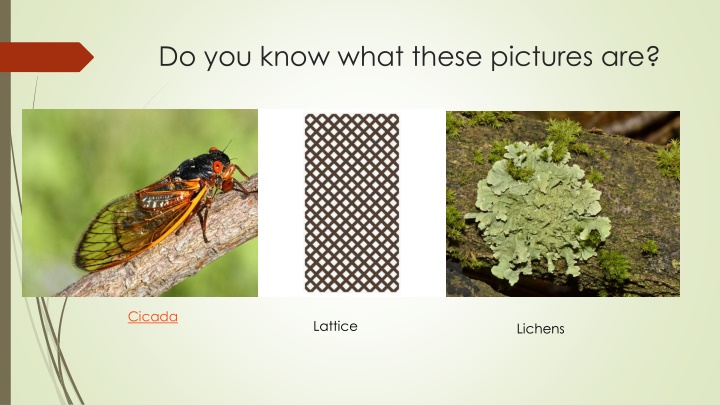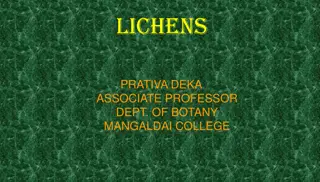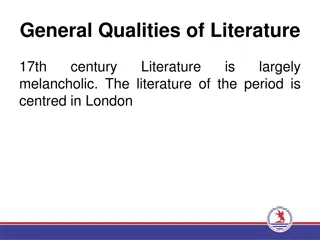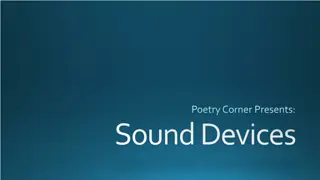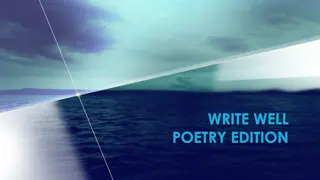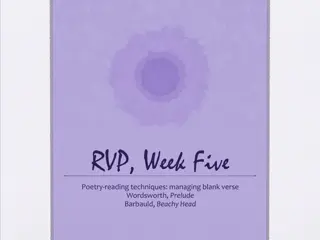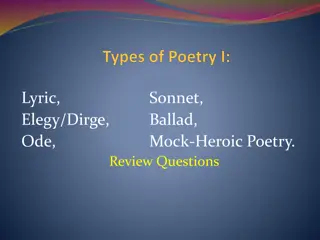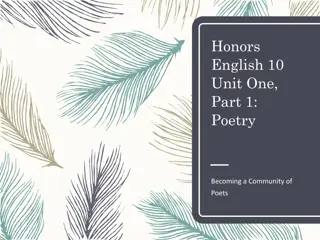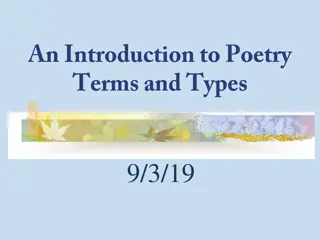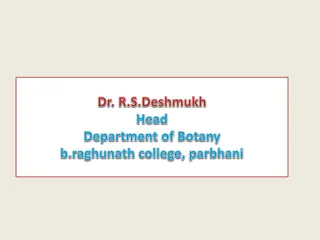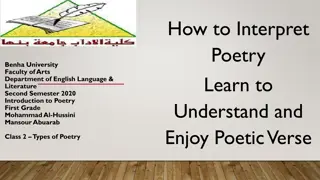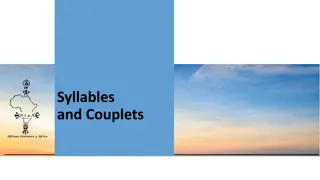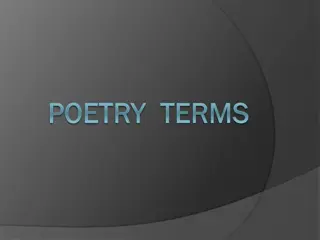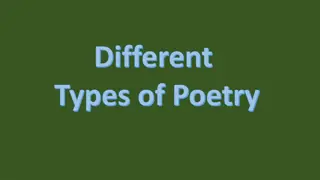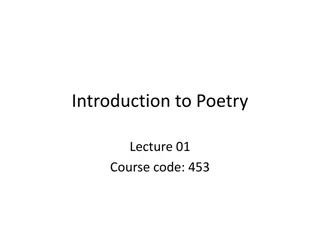Exploration of Poetry Forms: Cicada, Lattice Lichens, Lyric Ode, and Poetic Analysis
Discover the beauty and intricacies of poetry through the exploration of images depicting Cicada, Lattice Lichens, Lyric Ode, and poetic analysis. Dive into the world of Odes, Lyrical poems, and analyze how poets use form and figurative language to express emotions and ideas. Uncover themes of nature, beauty, and emotion in Pablo Neruda's "Ode to Enchanted Light" and Mary Oliver's "Sleeping in the Forest." Engage with the central ideas, textual evidence, and poetic structure to understand the profound impact of words in poetry.
Download Presentation

Please find below an Image/Link to download the presentation.
The content on the website is provided AS IS for your information and personal use only. It may not be sold, licensed, or shared on other websites without obtaining consent from the author.If you encounter any issues during the download, it is possible that the publisher has removed the file from their server.
You are allowed to download the files provided on this website for personal or commercial use, subject to the condition that they are used lawfully. All files are the property of their respective owners.
The content on the website is provided AS IS for your information and personal use only. It may not be sold, licensed, or shared on other websites without obtaining consent from the author.
E N D
Presentation Transcript
Do you know what these pictures are? Cicada Lattice Lichens
Ode/Lyric RL.1 Cite Textual evidence RL.2 Determine a central idea RL.4 Determine meaning of words and phrases RL.5 Analyze how a poem s form contributes to its meaning RL.6 Analyze points of view of a narrator s voice SL.1 Engage in collaborative discussions. SL.6 Adapt speech to a variety of contexts and tasks
Objective Rationale Today we will be able to analyze poetic form and how poets use figurative language to express feelings and ideas We need to be able understand different forms of poetry and the different ways poets express their thoughts and feelings. Turn to page 170
Lyric Ode A short poem with a single speaker expressing strong emotions or thought Known for its musicality Originally the ode was written to be accompanied by music or dance. formal structure Serious themes: justice, truth, or beauty Celebrates its subject: person, event, thing, or element in nature Free Verse is a form that does not use formal structure or rhyme schemes
1. Ode to enchanted light Pablo Neruda What feelings are suggested in lines 1-9 of the poem? How does the poet suggest those feelings? Under the trees light has dropped from the top of the sky, light like a green 5 latticework of branches, shining on every leaf, drifting down like clean white sand. 2.A cicada is an insect that makes a high-pitched, continuous sound, usually in summer. Reread lines 10- 12. What repeated first sound or alliteration, do you hear, and how are the sounds connected to the poems meaning? 10 A cicada sends its sawing song high into the empty air. 3.Does the poem meet the requirements of an ode? Why or why not? The world is a glass overflowing 15 with water. Cicada
Sleeping in the Forest Mary Oliver I thought the earth Turn to page 172 Reread the last sentence of the poem. What might the speaker mean by something better ? remembered me, she took me back so tenderly, arranging her dark skirts, her pockets 5 full of lichens and seeds. I slept Reread lines 5-7. What is compared to a stone/on the riverbed ? Where else does the image appear in the poem? as never before, a stone on the riverbed, nothing between me and the white fire of the stars but my thoughts, and they floated 10 light as moths among the branches of the perfect trees. All night Identify examples of each of the elements of a lyric poem that appear in Sleeping in the Forrest. Do you think Oliver s poem is a good example of a lyric poem? Why or why not? I heard the small kingdoms breathing around me, the insects, and the birds who do their work in the darkness. All night 15 I rose and fell, as if in water, grappling with luminous doom. By morning I had vanished at least a dozen times into something better.
